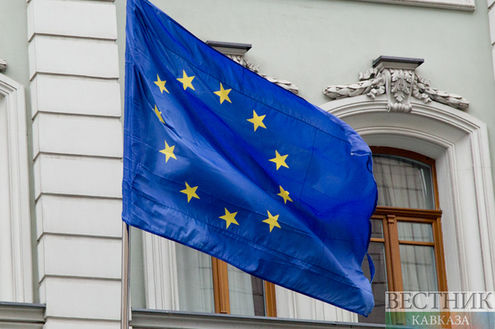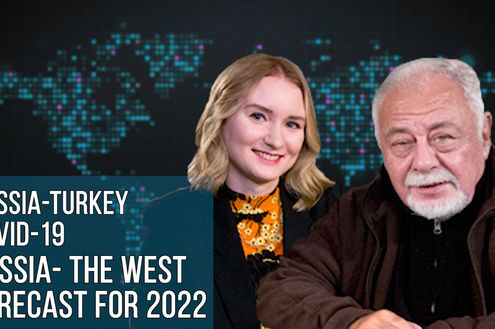Interview by Vestnik Kavkaza
On October 23-24th a joint session of the Presidential Council for Inter-ethnic Affairs and the Presidential Council for Cooperation with Religious Organizations will take place. According to Kommersant, an individual project will be developed for each region. The goal of the projects is to support pride in one's home region and its uniqueness in the state unity.
An expert of the Presidential Council for Inter-ethnic Affairs and the Commission for Spiritual, Moral, and Patriotic Education of Children and Young People, the Executive Director of the international youth social organization “Sodruzhestvo”, Magomed Aliyev, told Vestnik Kavkaza about measures for reaching social consensus in the sphere of inter-ethnic policy.
- How has the conflicting ethnic and religious situation changed in the youth sphere in the North Caucasus in recent times? Is there a positive or negative tendency?
- In the NCFD and the SFD the situation is changing for the better. There are fewer radical young citizens who go to the forests. The situation has improved in the domestic sphere and communication between young people. Fortunately, the process of information exchange between regions is going on actively; the communication skills of young people have expanded. I remember my childhood and the time I studied at university, we had almost no opportunities for visiting other regions and meeting the guys who lived there. Today, even in schools, boys and girls have more opportunities for participation in interregional, all-Russian arrangements. They can see that their neighbors are ordinary guys who have similar problems.
The increase of mobility leads to the unity of the Russian nation, and we try to convince officials and businessmen to promote the mobility of young people, so that they can visit each other.
Today young people don't earn enough money to visit Siberia or the Far East. Aircraft and train tickets are unreasonably high. Often tours to Turkey and Egypt (accommodation, round trip tickets, and other services) cost less than tickets to Altai.
I cannot say that nothing is being done to improve the mobility of young people. Airways and Russian Railways meet us halfway. But it is important to enhance efforts, to educate children from a young age.
We have several major projects. One of them is “We are Together – Children of Russia.” Children of all nationalities gather, sing, dance; children of different religions and different abilities – healthy children and disabled children. They all are equal on the stage. We are citizens of Russia; and this is the most important thing which should be realized by young people.
Last week the exhibition “Tiny Masterpieces” closed at the State Duma. When we organized a major festival in May, 6000 guests came there, more than 2000 children sent their works from 22 countries. The topic was toys and games of different countries. We chose the best, 100 works were presented at the State Duma. We show how children should be educated in the sphere of mutual respect.
The highest example of a respectful attitude is friendship. We always say that people’s friendship should exist, friendship of individuals. If you are a friend of someone, the color of his eyes, hair, skin doesn’t matter. So there is success both in the Caucasus and in Russia in general.
- What is the most progressive republic in the North Caucasus in this sense? Who pays most attention to the problem?
- Everybody pays attention, but the biggest progress can be seen in regions where people have always lived together – Kabardino-Balkaria, Karachay-Cherkessia. Dagestan and Chechnya pay a lot of attention to the problem. There is a struggle against migration from the region; they try to make people want to live in their native republics.
The heads of regions who are interested in it pay a lot of attention to inter-ethnic consensus.
- A recent incident in Stavropol has proved that the problem is not significantly addressed by the federal authorities. What has to be done to eliminate such issues?
- We have a lot of laws in the country, but, unfortunately, many of them are not being followed. I have recently spoken at the youth forum Mashuk-2014. However, there was no lecture on inter-ethnic relations, inter-ethnic consensus or inter-religious problems at the camp, where young people from all over the NCFD gathered. I was indignant at the fact and I told all the structures which were involved in the organization of the forum about it. If we don’t work on this, any other projects will be useless.
Stavropol Territory is a difficult region from this point of view. There are many loud incidents, and the incident in late September shows that a domestic event is turning into an inter-ethnic conflict. It means we don’t work enough with certain people; they don’t have sufficient education in the intercultural sphere.
We are working hard. We create anti-extremist centers for harmonization of inter-ethnic relations at the federal level. We should attract prominent social activists, the authorities should be involved in it, as well as social activists and young people themselves.
It is impossible to guarantee that tomorrow there will be no conflict in a different place. It happens everywhere, but the mass media pours oil on flames. They want people to read and listen to them. We should treat each incident separately. I hope there will be fewer and fewer of them.
- “Sodruzhestvo” works in the whole post-Soviet territory, including the countries of the South Caucasus. What are the problems of young people from the region who come to Russia?
- Speaking about external migration, we should remember that there is a big problem of speaking Russian. There are no such problems in Baku and Yerevan; but when you come to Georgia, few people speak Russian there. Maybw it is a targeted policy or not. I don’t know. However, young people who come to Russia are different. Smart and educated people come; those who don’t know what to do in life come as well. The last are often involved in gangs, and conflicts appear.
Guys unite in groups to protect themselves. But when a resident of the capital sees five young men whose appearance is different from his, they speak a foreign language, the resident is stressed. The stress turns into a negative attitude. Negativity causes a response from people who have arrived in Moscow – they start to gather their natives, as they don’t know anyone else and communicate with each other only…
So we need clearer work in the sphere of migration policy. The FMS doesn’t do its best, I should be honest. One criminal who passed the border illegally could become a problem for a whole nation. An example of this is the murder in Biryulyovo.
There should be certain requirements for the behavior of migrants. It's one thing when you come as a tourist, but labor migration is a different thing. Labor migrants should at least speak Russian, know Russian culture, Russian history, at least the basics.
We should work with local populations, reduce negative attitudes. Information about the number of migrants is exaggerated; they say there are 10-15 million people. In fact, there are not so many migrants in Russia. I think there are 3-4 million of them.






